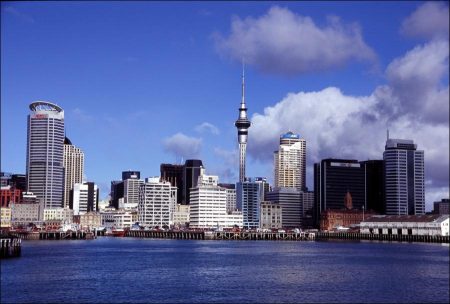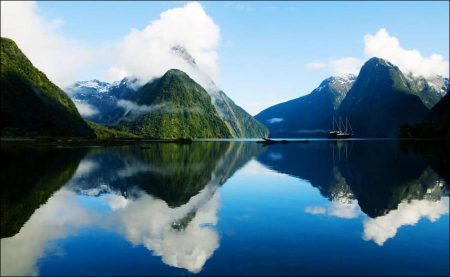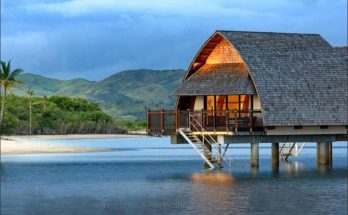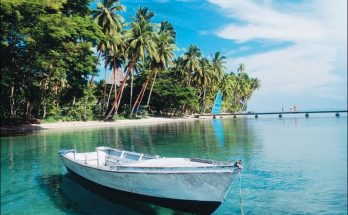New Zealand is a country in the Southern Hemisphere in the Oceania region, which is called Aotearoa in Māori, which translates as the Land of the Long White Cloud, It is a country of rare seismic beauty enriched with glacial mountains, fast-flowing rivers, deep, clear lakes, hissing geysers and boiling mud. New Zealand is notable for its geographic isolation, being separated from Australia to the northwest by the Tasman Sea, some 2,000 kilometres (1,250 miles) across. Its closest neighbours to the north are New Caledonia, Fiji and Tonga.
The capital city of New Zealand is Wellington. It has got its independence on 26 September 1907 from UK. The Maori, from eastern Polynesia, first settled New Zealand sometime after 800AD. Abel Tasman, a Dutch mariner, discovered New Zealand for Europeans in 1642. He was followed by Captain James Cook of the British Navy in 1769, and later by seal-traders, loggers, whalers and Christian missionaries.
The government type is parliamentary democracy where Elizabeth II is the Queen of New Zealand and is represented by a non-partisan Governor-General; the Queen ‘reigns but does not rule’, so she has no real political influence. Political power is held by the Prime Minister, who is leader of the Government. The Realm of New Zealand also includes the Cook Islands and Niue, which are entirely self-governing, Tokelau, and the Ross Dependency (New Zealand’s territorial claim in Antarctica).
For the administration of environmental and transport matters New Zealand has 12 regional councils and 74 territorial authorities to administer roading, sewerage, building consents, and other local matters. The territorial authorities are 16 city councils, 57 district councils, and the Chatham Islands County Council.
New Zealand has a population of about 4.1 million. About 70% of the population are of European descent. New Zealand-born Europeans are collectively known as Pākeha – this term is used variously and some Māori use it to refer to all non-Māori New Zealanders.
Christianity is the predominant religion in New Zealand, although nearly 40% of the population has no religious affiliation. The main Christian denominations are Anglicanism, Roman Catholicism, Presbyterianism and Methodism. According to census figures there are Anglican 24%, Presbyterian 18%, Roman Catholic 15%, Methodist 5%, Baptist 2%, other Protestant 3%, unspecified or none 33% of the overall population.
New Zealand comprises two main islands, the North and South Islands, and a number of smaller islands. The total land area of New Zealand is 268,680 square kilometres (103,738 sq mi) which is a little less than that of Italy and Japan, and a little more than the United Kingdom. The country has approximatly 15,134 km of coastline. The most significant of the smaller inhabited islands of New Zealand include Stewart Island/Rakiura; Waiheke Island, in Auckland’s Hauraki Gulf; Great Barrier Island, east of the Hauraki Gulf; and the Chatham Islands, named Rekohu by Moriori.
The South Island is the largest land mass in New Zealand, and is divided along its length by the Southern Alps, the highest peak of which is Aoraki(Mount Cook), 3,754 metres (12,316 ft). There are 18 peaks of more than 3,000 metres (9,800 ft) in the South Island. The North Island is less mountainous than the South, but is marked by volcanism. The tallest North Island mountain, Mount Ruapehu (2,797 m / 9,176 ft), is an active cone volcano. The dramatic and varied landscape of New Zealand has made it a popular location for the production of television programmes and films, including the Lord of the Rings trilogy.
The country has extensive marine resources, with the fifth-largest Exclusive Economic Zone in the world, covering over four million square kilometres (1.5 million sq mi), more than 15 times its land area. There are also abundant native forests, long, deserted beaches and a variety of fauna, such as the kiwi, endemic to its shores.
The climate throughout the country is mild, with temperatures rarely falling below 0°C (32°F) or rising above 30°C (86°F). On the West Coast of the South Island to dry and continental in the Mackenzie Basin of inland Canterbury and subtropical in Northland conditions vary from wet and cold. Christchurch is the driest is the driest of the main cities, receiving only some 640 mm (25 in) of rain per year. Auckland, the wettest, receives a little less than three times that amount.
Until the arrival of humans, other than three species of bat(one now extinct) there were no non-marine mammals. New Zealand’s forests were inhabited by a diverse range of birds including the flightless moa (now extinct), and the kiwi, kakapo, and takahē, all endangered due to human actions. Unique birds capable of flight include the Haast’s eagle, which was the world’s largest bird of prey (now extinct), and the large kākā and kea parrots. Reptiles present in New Zealand include skinks, geckos and tuatara. There are four endemic species of New Zealand primitive frogs. There are no snakes but there are many species of insects, including the weta, one species of which may grow as large as a house mouse and is the heaviest insect in the world.
Visits: 90




